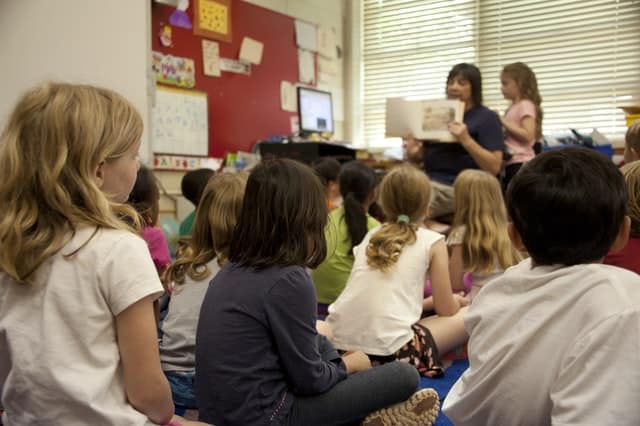
Writing for children may seem like child’s play—but the truth is, their honesty and innocence means that kids won’t pretend to like something, and you can’t tell them to like a book when they don’t.
In order to be a success, kids will need to like your book enough to tell other kids about it. That’s what happened with J.K. Rowling’s Harry Potter series: sheer word of mouth propelled it to the bestseller lists, because the 11-year-olds who read the book about an 11-year-old wizard loved it enough to tell the other kids about it.
How to Write for Kids
Kids can be brutally honest critics. The following tips will help you write stories that kids will love and run to tell their friends about.
1. Choose a category.
Before you start your story, you should decide which category you want to write in. Children’s books are normally categorized based on the age group:
- Picture Books: These books are typically targeted to children up to four years old, with a higher word count for older children. Books for babies usually have up to 300 words, while books for preschool children can have as many as 1,000 words.
- Early Readers: Marketed to children aged 5 to 7 years old, these books generally have the goal of teaching children to read independently. These books typically have between 1,000 to 5,000 words and come with plenty of illustrations.
- Chapter Books or Young Readers Books: As the name suggests, these books are divided into chapters. Aimed at about 6- to 9-year-olds, these books have fewer pictures and introduce more challenging words.
- Middle Grade Books: These books target children ages 9 to 12 years old, and can feature up to 60,000 words.
- Young Adult (YA) Novels: YA novels are designed for older teens, but even adults can read them. These books usually feature teenaged protagonists or young adults.
One important thing to remember is that children usually prefer to read about characters who are slightly older than themselves. This is why middle grade books usually feature characters in middle or high school.
2. Read the best children’s books.
If you want to write books for kids, dedicate time to reading the best children’s books for the age group you’re targeting. These might be picture books, beginner chapter books, or middle grade books.
Reading the best works, especially those that have stood the test of time, will offer valuable insight to what children really want.
3. Don’t dumb down your story.
One of the biggest mistakes that authors make when writing for children is assuming that their audience won’t understand long words or sentences. This results in books that are dumbed down, which is an affront to children’s capabilities!
The truth is, children are often much smarter than adults give them credit for. This means you don’t have to skip difficult topics like death or tragedy: if you take a look at classic fairy tales such as those of Hans Christian Andersen, they don’t always end happily ever after, and kids still love them!
Another aspect is your choice of words: children’s minds can learn new words very quickly through context, so you can write as naturally as possible.
British educator Charlotte Mason also believed that children’s minds come alive with excellently written stories, so good writing—not necessarily easy writing—should be your goal!
4. Spend time with kids.
If you want to write for children, spend time with them. In her Masterclass course, bestselling author Judy Blume shares how she took much of her inspiration from her own children, who would come home and talk about everything that happened in school.
Listen to how kids actually talk. Most of the time, they speak in fragments, sometimes in grunts, and rarely in complete sentences. This means your book will sound more realistic if you incorporate some of these speaking habits into your dialogue.
5. Empower your readers through the characters.
Children are normally limited in their daily lives: their youth, lack of experience, or the restraints set by adults all mean they don’t get to go on many adventures in real life. That’s one of the powers of a children’s book: your readers get to live vicariously through the exciting challenges and victories of your characters.
This is one reason why many characters in children’s books are either orphaned, living with a relative, or at least away from their parents: this lack of supervision makes for a natural excuse for them to off on their own and triumph over their challenges.
For example, think about how Harry Potter and his friends stood up to the evil Lord Voldemort, or how Peter, Susan, Edmund and Lucy helped save Narnia.
6. Talk about issues important to children.
In her middle grade books, Judy Blume doesn’t shy away from the questions that children ask as they grow up, even when it comes to seemingly taboo topics. The Sweet Valley Twins series by Francine Pascal, very popular in the 1990s, also effectively dealt with topics like a girl’s first period, a first kiss, and conflict among peers.
7. Resist the urge to preach or moralize in your story.
Sally Lloyd-Jones, bestselling author of the Jesus Storybook Bible, shared her experience of reading one of her stories, about Daniel in the lions’ den, to a group of kids in Sunday school. She described how the children all looked up to her with shining eyes, leaning forward with bated breath as she read the story.
But, the moment she tried to tell them the “moral” of the story, she saw their shoulders visibly stump, the magic broken.
Gone are the days when every children’s story needed to have a “moral.” Parents used to believe that children only learn from stories with morals, but this was mostly during the Puritan times, when religious undertones tinged everything in daily life.
Since then, the 19th and 20th centuries, known as the Golden Age of Children’s Literature, have brought us many classic works that utilize the simple power of storytelling to capture kids’ imaginations and inspire them to goodness, without stating the “lessons” outright.
8. Make sure you inject humor.
R.L. Stine, the bestselling author of several middle-grade horror series such as Fear Street and Goosebumps, believes in the importance of humor, even when writing scary stories.
He describes the funny scenes as being like a rest period, similar to the lull you feel when a roller coaster climbs up before plummeting down again.
Writing for Children
Writing for children can be a rewarding experience, especially when you find a way to connect with your readers.
After all, no one is as frank and genuine as a child, and when they find something they love, they automatically commit to it and tell everyone around them!
Did you find this post helpful? Let us know in the comments below!
If you enjoyed this post, then you might also like:
- 30 Classic Children’s Picture Books
- 15 Best Children’s Books of 2019: Inspiring Reads for Little Ones
- How to Write a Children’s Book: Tips on Length, Illustrations, and More
- Read-Aloud Books: The Best Websites for Kids
- Free eBooks for Kids: 16 Sites to Download Free Reads for the Little Ones
Yen Cabag is the Blog Writer of TCK Publishing. She is also a homeschooling mom, family coach, and speaker for the Charlotte Mason method, an educational philosophy that places great emphasis on classic literature and the masterpieces in art and music. She has also written several books, both fiction and nonfiction. Her passion is to see the next generation of children become lovers of reading and learning in the midst of short attention spans.



Yeah,I like your article.
It’s amazing.
You have explained everything in very simple points thank you so much .
We’re so glad you enjoyed the article, Mahipal! :)
your information on writing books for children has given me insight to write a book on natural events, life of birds and mammals. I shall try now.
Thank you
We’re so happy you found the article helpful! Best of luck with your book :)
This is really insightful, Yen. Before now, I always believed that writing for kids was a craft for the bravehearted. Couldn’t wrap my head around it no matter how hard I tried. With these eye-opening tips, I think I’m ready to work on my first children book! Thank you so much!
We’re so glad you found Yen’s article helpful! Best of luck with your book :)
I loved your article, it felt like it was written for me! Thank you!
I like what you say. I have just finished writing a book for teenagers. I hope that I’ve included most of the points you mention. I would like to send you a copy of it and get your feedback. Would you be willing to read it and say what you think?
Hi Tony, thanks for your comment! Unfortunately we don’t really have the time/resources to send individual feedback, but I would encourage you to join a writers’ group (either in-person or online) and share your work, you’ll get some really helpful feedback from fellow writers!
I’ll pass this along to Yen! We’re so glad you enjoyed her article :)